By Todd Avery Raffensperger
“To the Great Stalin, from the grateful Hungarian People,” read the inscription on a 24-foot-high bronze statue of Joseph Stalin on the grounds of Budapest City Park, erected in 1951 to honor the tyrant of the Soviet Union. Now, on the evening of October 23, 1956, some 5,000 students threw ropes around the statue’s neck, melted the knees with welding torches, and tore down the structure amid a thunderous chorus of “Russians go home, Russians go home!”
The symbolic act was tantamount to the first shots fired at Lexington or the storming of the Bastille: an expression of open, courageous defiance against injustice and oppression. Such a protest was not unforeseen by Communist authorities. Three years earlier, the Soviet bloc had found itself racked by unrest and discord across Eastern Europe, with riots in East Germany in 1953 and in Poland in the summer of 1956. While the leaders of the Kremlin, the heirs to Stalin’s empire, were grappling with the Polish crisis, they also cast wary eyes on the increasingly precarious situation in the Hungarian People’s Republic.
Hungary’s “Little Stalin”
Of all the Central and Eastern European countries under the Soviet boot, Hungary had the reputation of being ruled by the regime that most closely emulated the tactics and philosophy of Stalinism. Since the Communists seized power in 1947, Hungary’s prime minister and secretary of the Communist Hungarian Workers’ Party (HWP) had been Matyos Rakosi, a man who—not for nothing—had earned the nickname of “Little Stalin.” Like his Soviet idol, Rakosi had instituted a series of austere and crude economic programs that emphasized heavy industrialization and agricultural collectivization. His policies predictably led to low wages, high prices, and a meager standard of living for his people. In his methodical brutality, Rakosi emulated his Soviet master as well, creating the Allamvelmi Hatosag, or AVH, the Hungarian political police, referred to by the people as “Avos.” Numbering up to 50,000 dedicated, ideologically driven men and women, the AVH quickly developed a reputation for cruelty and ruthlessness that rivaled even that of its Soviet counterpart, the KGB. It had an extensive network of informants throughout the country, invading every area of society, from university classrooms to factory floors and farmyards in the countryside. Its mission was simple: to root out any and all supposed “enemies of the people,” whoever and however they were defined by the party.
Farmers who complained about collectives, writers who criticized the lack of creative freedom, even fellow Communists who expressed admiration for Marshal Tito of Yugoslavia (who had broken with Stalin in the 1940s and refused to join the Warsaw Pact) were just a few of the many groups that the Rakosi regime ordered the AVH to arrest. Such unfortunate victims usually found themselves sent to a labor camp in the Hungarian countryside or the Soviet Union, or else sent to the infamous address of AVH headquarters in Budapest, Andrassy Ut 60. People sent to this address for questioning were rarely seen again. On average, nearly 300,000 Hungarians were arrested each year. For Rakosi and other Stalinist-style dictators in Eastern Europe, everything began to change after Stalin’s death in 1953. The leadership that followed in his wake tried to embark upon a more moderate course, a policy summarized by the euphonious phrase, “Socialism with a Smiling Face.”
Three years later, on February 25, 1956, the secretary for the Communist Party of the Soviet Union, Nikita Khrushchev, gave a speech to the Twentieth Party Congress in which he formally denounced Stalin, his policies, tactics, and excesses. In what is remembered as Khrushchev’s famous “secret speech,” he condemned Stalin for using what he regarded as “extreme methods.” The new leader flatly stated that Stalin “showed in a whole series of cases his intolerance, his brutality, and his abuse of power.” Khrushchev excoriated Stalin for choosing “the path of repression and physical annihilation, not only against actual enemies, but also against individuals who had not committed any crimes against the Party and the Soviet government.” In condemning Stalin’s methods, the newly emerging leader of the Soviet Union was giving Rakosi and the other “little Stalins” of Eastern Europe open notice that the old days were over.

The First Shot of the Hungarian Uprising
Five months later, Central Committee member Anastos Mikoyan traveled to Budapest to meet with Rakosi and the leaders of the HWP and assess the political situation in Hungary. He did not like what he found. Instead of intimidating his critics, Rakosi’s Stalinist-style rule had only managed to stimulate growing opposition to his regime, to the point where even members of his own party were openly criticizing him in newspapers and on the radio. On the streets, the Hungarian people were becoming less and less afraid to speak their minds about the deplorable economic conditions in which they lived. Among the country’s intelligentsia, writers, university students, and intellectuals were forming discussion groups, the most famous being the Petolfi Circle, which held regular meetings where speakers, before audiences of thousands of people, delivered diatribes against Rakosi, the AVH, and the Soviets.
Mikoyan reported back to Khrushchev and the Central Committee that the growing discontent was the result of three things—political agitation by the United States and other Western powers, the influence of “Titoist” propaganda from Yugoslavia, and lack of confidence in Rakosi’s leadership. To the Soviets, the first step to remedy the situation was obvious. Rakosi was forced to resign his posts and was succeeded by committee member Erno Gero, who was, in terms of policy, no different from his hard-line predecessor.
But the Soviets also made a major concession to the party’s reformers by calling for the reinstatement of Imre Nagy. Nagy had been Hungary’s minister for agriculture, but he had been removed from office and expelled from the party because of his opposition to Rakosi’s collectivist policy. He was a Moscow-trained Communist through and through, but his lack of popularity with the party hierarchy made him a hero to growing numbers of opponents to the government. If the Hungarians and Soviets had hoped that Nagy’s “rehabilitation” would help to calm the rough political seas in Budapest, they were sorely mistaken.
On the evening of October 23, a large gathering of demonstrators, most of whom were college students, converged on the broadcasting building for Radio Kossuth, the state-run radio station in Budapest. They had come with a list of demands, 16 to be exact, that they wished to read on the air. Among the demands were the installation of Nagy to the premiership, the holding of free elections, and the withdrawal of Soviet occupation forces from Hungary. Greeting them were representatives of the radio station, along with 300 well-armed AVH troops. The students were admitted into the building—and promptly arrested. Realizing this, demonstrators began chanting for the release of their representatives. As the evening wore on, tension, rhetoric, and emotions on both sides escalated. Suddenly, a shot rang out. Exactly who fired the first shot will never be known. What is known, however, is what happened next.
The Idle Hungarian People’s Army
Units of the Hungarian 8th Tank Regiment quickly arrived on the scene, ordered by the government to help quell the growing chaos. But instead of interceding on behalf of the besieged AVH contingent inside the building, the troops simply sat in their trucks and watched the unfolding chain of events. Meanwhile, throughout the city, all hell was collectively breaking loose. Demonstrators began arming themselves, some grabbing their old hunting rifles or taking weapons from the soldiers who were standing aside. Others broke into government-owned weapons factories and arsenals. By the early hours of October 24, demonstrators had seized the lower level of the radio building, while the AVH held the upper level. What had started out as a civil, disciplined expression of mass discontent had quickly turned into an armed uprising.

One key factor in the revolt would be the action—or inaction—by units of the Hungarian People’s Army. First established in 1945, the army numbered approximately 140,000 men organized into 12 divisions, two of them armored. In doctrine, training, organization, and equipment, the Hungarian Army was a Soviet creation, with many of its officer corps trained in the USSR, while the bulk of the enlisted men came from the rural population, conscripted for two years of duty. Now the army was caught in the middle, trapped between the orders of the government and the soldiers’ proletarian sympathy for the demonstrators.
It did not take long for the uprising to spread to the other parts of the country. In the city of Magyarovar, located in the northwestern part of the country close to the Austrian border, demonstrators converged on the local headquarters of the AVH, demanding the removal of Soviet symbols from the headquarters building. The AVH defending the area did not wait for orders; they simply opened fire. Eighty-five people were killed, among them several women and children. The demonstrators did not hesitate to retaliate for the atrocity, and with the help of Hungarian troops they captured or killed many of the AVH personnel responsible. One AVH officer tried to escape from custody and was subsequently beaten to death by the infuriated crowd. Like other towns and cities throughout Hungary, Magyarovar came under control of a local citizens’ council, which promptly seized power from local government and party officials.
As the outbreak continued to grow throughout Hungary, the HWP Central Committee held an emergency meeting. By the end of the emergency session, two critical decisions were made that would shape the course of events to come. First, Nagy was appointed to the premiership, as the throngs of demonstrators had been demanding. Second, as a condition for his acceptance, Nagy had to agree to outgoing premier Gero’s standing request for Soviet assistance. Such a request went through the office of the Soviet ambassador, Yuri Andropov, and reached the Soviet minister of defense, the legendary World War II hero, General Georgi Zhukov. By the time the order was given, at approximately 2 am on the morning of the 24th, Soviet tanks were already deploying in Budapest.
At that time, the Soviet military presence in Hungary comprised two mechanized divisions, the 2nd Guards stationed at Cegled, 50 miles southeast of Budapest, and the 17th Guards, 43 miles southwest. Their combined strength was 20,000 combat troops, supplemented by 600 tanks and other armored vehicles. But only 700 soldiers and 50 tanks were initially deployed at key locations around the capital. It was hoped that the token show of force would be enough to intimidate the demonstrators and restore order. Beyond this act, Soviet commanders were at a loss as to what to do next. They had received no rules of engagement or orders to attack any rebel strongpoints, and they were totally unprepared for the reception they were about to receive.
Maleter and “Wooden Leg Johnny”
As the Hungarian Army sat on the sidelines and the government was paralyzed with inaction, the defense of the ancient cultural center of Eastern Europe fell to a motley collection of citizens that the Soviets in their field reports were describing as “bandits.” In reality, they were factory workers, apprentices, and students, the same people the regime had always declared it was serving. There also were Hungarian soldiers who had deserted their units, troublemakers looking to take advantage of the chaos, and even some AVH personnel who saw it as prudent to switch sides at the most propitious time. Young and old, men and women, all became part of what was beginning to look like a true “people’s army.” This army started to concentrate around several regions throughout Budapest. Of varying size and strength, most the groups often took on the names of the city streets where they were located, such as the Prater Street, Kisfaludy Street, and Vajdahunyad Street groups. Far and away the largest concentration of forces in the city centered on the Corvin Cinema, ultimately reaching the approximate strength of 1,200 insurgents. It would constitute the most formidable resistance faced by Soviet and police forces.
Several spontaneous leaders started to come forward. One of the leaders of the Corvin Group was Janos Mesz, nicknamed “Wooden Leg Johnny,” who had lost his left leg in an accident years before. The tall, lanky factory worker was easily distinguishable as he hobbled around the streets of Budapest, a Mosin-Nagant rifle slung over his shoulder, his jaw bandaged from a wound he had received, and his head adorned with a jaunty fedora hat. The most prominent rebel leader to emerge at this time was a tank officer from the Hungarian Army, Colonel Pal Maleter. Ordered by the government to secure the Killian Barracks and keep it from becoming a base for insurgents, Maleter instead added his tanks to the insurgents and managed to decimate a Soviet column of nearly 80 soldiers and a dozen tanks.

A Two-Faced Battle
Throughout the city, the situation varied from neighborhood to neighborhood. Some areas were completely peaceful, with the city’s residents going about their daily routines, while in other areas resistance fighters fraternized with Soviet soldiers, at least those of Ukrainian or non-Russian origin who were in sympathy with the resistance. There were even instances of Soviet soldiers going over to the insurgents.
But in other parts of the city, the fighting was vicious and without quarter. In many instances AVH personnel, surrounded and out of ammunition, would surrender, only to be shot down by resistance forces as they stepped out from their strongholds, one by one. On several occasions, the bodies of AVH officers were hung upside down from trees to be spat upon and beaten by crowds of Hungarians who had come to fear and hate the very mention of the AVH. There were also many instances of Soviet tank crews, frustrated with the course of the fighting, turning the 85mm guns of their T-34 tanks onto residential neighborhoods and blindly firing round after round into apartment buildings, killing untold numbers of people, most of whom merely wished to stay out of the way of the bullets. One of the worst excesses perpetrated by either side occurred in front of the Parliament building at Kossuth Square on the morning of the 25th, when Soviet tank crews opened fire on a mass of people congregating in the square. Seventy-five civilians were killed and hundreds more were injured.
Nagy’s Dilemma
While fighting raged in the streets, indecision swept the corridors of power in Budapest and Moscow. In the Hungarian capital, Prime Minister Nagy found himself in an increasingly difficult situation. A self-styled reformer in the Communist hierarchy, Nagy did not consider himself a rebel and certainly did not wish to destroy the socialist system that he fully supported. But coming to power as he did on the heels of his predecessor’s request for Soviet intervention, Nagy found himself associated with an act of which he personally did not approve. On his first full day as premier, Nagy went on Radio Kossuth to beseech the insurgents to lay down their arms and cease fighting, while he equally urged Soviet representatives Anastas Mikoyan and Mikhail Suslov to give him permission to openly disassociate himself with the intervention. Both pleas fell on deaf ears.
In the days that followed, a steadier, more confident Nagy set about to solidify the government’s position. On October 27, he announced the formation of a government that, while comprising mostly Communists, also included representatives of the newly formed National Peasant and Shareholders Parties. For the first time since 1947, the government was not controlled entirely by one party. On October 28, the Soviet forces withdrew from Budapest.
The impetus for the unexpected development arose from the increasingly nervous attitude in the Kremlin. In spite of the rosy reports coming from Mikoyan about Soviet forces dealing with only a few groups of “bandits,” it was becoming clear to the world that the situation was far from under control and that insurgents controlled most of the countryside. Meanwhile, international condemnation was increasing, not only from the usual quarters of Washington, London, and other Western capitals, but also from Third World countries, and pressure was mounting for the United Nations to get involved. It was being duly noted by the world’s press that, barely one year before, the Warsaw Pact agreement had stipulated, among other things, respect for the internal affairs of all the member nations. When Nagy beseeched Khrushchev to pull his forces back so that the government could restore order, Khrushchev was forced to agree.

An Attempt at Reestablishing Order
By the end of October, Budapest was peaceful for the first time in over a week. Soviet soldiers who were seen on the streets appeared to be withdrawing. For a brief moment, it looked as if the protesters had achieved the impossible. The Soviets had been beaten. Hungary was free. For Nagy and his government, it now seemed only to be a matter of stabilizing the situation. They started to meet with representatives of the provisional revolutionary committees to coordinate their activities and restore public services.
On the military side, Nagy created a new command apparatus called the Revolutionary National Defense Committee (RNDC) to centralize the activities of the Ministry of Defense with the activities of the hodgepodge of insurgent forces. The elected head of the RNDC was the former chief of military training, General Bela Kiraly, and one of Kiraly’s first steps was to clean out any leaders whose loyalty was in question, including the deputy and first deputy ministers of defense, the Army chief of staff, and the chiefs of the political department. Kiraly also took the symbolic step of reinstating the army’s original name, the Honved, and restored all traditional ranks, symbols, and epaulets of the Hungarian military.
Before leaving his post, the outgoing Army chief of staff (and staunch Stalinist), General Lajos Toth, had one last card to play. Without informing Nagy or Kiraly, Toth issued a flurry of orders to the Honved units stationed in and around Budapest to redeploy from their current positions. Kiraly believed that the original positions had been ideal for defending the capital, and he immediately issued orders to countermand Toth’s moves. Unfortunately for Kiraly, Nagy, and the people of Hungary, the confusing orders and counterorders would not be resolved in time to prevent a catastrophe.
Soviets Across the Border
Meanwhile, Soviet representatives Suslov and Mikoyan continued to meet with representatives of the new government to discuss future relations between Hungary and the Soviet Union. Among the government’s representatives was newly promoted Maj. Gen. Maleter, who also was now Nagy’s minister of defense. Nagy got a hopeful sign on October 30, when the Soviet newspaper Pravda ran a declaration from the Central Committee in Moscow stating, among other things, that “the Soviet Government is prepared to enter into the appropriate negotiations with the Government of the Hungarian People’s Republic and other members of the Warsaw Pact on the question of the presence of Soviet troops on the territory of Hungary.” The statement seemed to Hungarians to presage a future for their country that was separate from the Warsaw Pact and the Soviet model of Communism. One day after the Pravda declaration, Nagy and his minister of state, Zoltan Tildy, broached to Suslov and Mikoyan the subject of a complete troop withdrawal. Meanwhile, Kiraly started to get strange reports from railroad stations throughout the country that the Soviet forces were indeed getting ready to leave Hungary. Other reports came in of Soviet units crossing the border from Romania and Ukraine and occupying the airfields of the Hungarian Air Force. When confronted with these reports, future Soviet premier Yuri Andropov explained that the new units were simply relieving units that had borne the brunt of the fighting. But by November 3, a force of approximately 15 divisions, some of which were equipped with new T-54 battle tanks, had entered Hungarian territory and formed a defensive semicircle around Budapest. What had changed?
Sealing Hungary’s Fate
A series of events far beyond Hungary’s borders was changing the overall dynamics of the situation in a way that ultimately spelled Nagy’s downfall. On October 27, U.S. Secretary of State John Foster Dulles had made an offer of economic aid to the countries of Eastern Europe, regardless of their form of government. To the Soviets, this was far from an act of selflessness, but rather a blatant effort by Washington to exploit the ongoing crisis by encouraging dissent within the Eastern bloc. Several members of the Central Committee were already of the opinion that the Hungarian uprising had been instigated by Western intelligence operatives, reinforcing the growing fear that Hungary could become a democratic foothold in Eastern Europe.
This fear was further heightened by reports of student demonstrations in Romania, which forced the Romanian government to close its borders with Hungary. Concern grew that unrest would spread to Czechoslovakia and even East Germany. The Communist leaders of these countries increasingly urged Moscow to do something about Hungary—and fast.

The last straw apparently came on October 31, when Minister of State Tildy met with Mikoyan and Suslov, suggesting the idea that Hungary withdraw from the Warsaw Pact and declare a state of neutrality, along the lines of Yugoslavia’s status. The surviving minutes from Nagy’s cabinet meetings show that it was indeed their intention to withdraw from the pact and establish a non-aligned socialist republic based on the model of Marshal Tito’s Yugoslavia. But to the Kremlin, the idea of Hungary leaving the alliance would set into motion the unraveling of the entire Warsaw Pact alliance, a nightmare scenario for Moscow.
Khrushchev was later to reflect that the Budapest situation was “like a nail in my head.” He could not sleep, and he constantly fretted about the options open to him. He knew that a full-scale invasion of Hungary by Soviet forces would fly in the face of everything he had been trying to do to reform the Soviet Union’s image before the world, and it would be a page right out of the book of Stalinism. But by the beginning of November, he had made his decision.
For his part, Nagy was not totally unaware of what was going on. At a November 1 cabinet meeting, he and his military advisers were duly apprised of the growing number of Soviet formations coming into the country from Romania and Czechoslovakia. Nagy demanded an explanation from Ambassador Andropov. The very model of composure, Andropov reassured the cabinet that it was all part of a careful, phased withdrawal.
A Plan of Invasion
While Andropov assured Nagy and his cabinet of his government’s good intentions, the secretary of the HWP, Janos Kadar, left the Parliament building to go to dinner, or so he told his colleagues. But in truth, Kadar had been engaged in secret negotiations with Moscow. Kadar had been a Nagy ally, but he realized that the Russians would not tolerate the government’s intention of withdrawing from the Warsaw Pact. On the eve of the coming storm, Kadar crossed the border into Romania, where he made plans to declare the creation of a new government, one more in line with the Soviet agenda.
As Kadar, with the assistance of Suslov and Mikoyan, lay the groundwork for a new government, the Soviet Army made its final preparations. The operation, codenamed Vichr (Whirlwind), would have the Soviets invade Hungary with such force and speed that there would be almost no time to resist. The Soviet forces already inside Hungary were organized into two armies. The Eighth Army was deployed around the eastern city of Debrecen and numbered six divisions, including the 31st Tank Division. The Thirty-Eighth Guards Army, stationed around the western city of Szekesfehrvar, comprised another seven divisions.
The heart of the operation was a separate formation stationed in Romania. It was known simply as “Special Corps,” originally formed in 1955 by the Soviet high command, with dual missions of defending the Hungarian border with Austria in the event of an invasion by NATO and of restoring order in Hungary in the event of an uprising. It comprised two mechanized divisions, one infantry division, a fighter air division, one bomber air division, and a pontoon bridge regiment. They were all Guards divisions, the elite of the Soviet Army. This force was further beefed up by the allocation of four Guards tank divisions and two Guards mechanized divisions. They were directed to seize the Hungarian capital quickly and brutally.

The UN’s Divided Attention
As the clock was running out for his government, Nagy placed his hope for a peaceful resolution to the crisis on two possibilities—one, that the United Nations would intervene, and, two, that his ongoing negotiations with the Soviets would produce an acceptable settlement. But before the United Nations could focus on the Hungarian situation, the world’s attention was diverted by a new crisis in the Middle East, where Israel had invaded the Sinai Peninsula while British and French troops landed in Port Said to seize the Suez Canal from the Egyptians. The Suez crisis immediately became the principal issue confronting the UN, and Hungary got pushed aside. On November 3, a Hungarian delegation led by General Maleter met with a Soviet delegation led by General Mikhail Malinin, deputy chief of the General Staff, at Soviet headquarters at Tokol, a village located on a small Danube island just south of Budapest. By 5:30 that evening, it seemed to the Hungarians that an agreement had finally been hammered out setting a timetable for total Soviet withdrawal from Hungary. The deadline was January 15, 1957. In the meantime, the Hungarian government was to provide food and shelter for Soviet troops, and all Soviet memorials within the country were to be restored and preserved. The agreement was to be signed at 10 pm that very night.
Operation Whirlwind
As the charade at Tokol went on, Nagy and his cabinet got the first report of the existence of Kadar’s new pro-Soviet government. At 5 am on November 4, Kadar’s de facto foreign minister went on the radio announcing the creation of the “Hungarian Revolutionary Worker Peasant Government,” operating out of Szolnok. He denounced Nagy as being weak and unable to control the forces of “fascism” and “counter-revolution,” and promised that his new government would restore order to the capital. Nagy tried to contact the delegation in Tokol, but all communications had been cut off. By this time, KGB forces, led by KGB head General Ivan Serov, had stormed the meeting room and arrested Maleter and the rest of the Hungarian delegation. Nagy and his advisers now realized that they had been deceived. Kiraly strongly urged the prime minister to issue a formal declaration of war with Russia. But by now it far too late for that. In the morning gloom of November 4, Operation Whirlwind began, to the din and thunder of tank engines and artillery fire. The Special Corps raced across the Hungarian border and moved into Budapest with hardly any resistance encountered. Other Soviet units seized Hungarian air bases, communications centers, and key bridges along their path of advance, and the Honved was caught unprepared.
Upon reaching the capital, Soviet mechanized columns raced down the main thoroughfares and descended on the key Hungarian strongpoints. The 128th Guards Infantry and the 2nd and 33rd Guards Mechanized Divisions, supported by more than 350 combat aircraft, proceeded to attack strongpoints in the classic Soviet Army style, working in combat groups of around 150 men supported by a dozen tanks, pulverizing every Hungarian position with air strikes and artillery bombardments and following up with tanks and supporting infantry. The Soviets were shooting at anything that moved. Even as the first explosions could be heard at Parliament Square, Kiraly was on the phone with Nagy, still pleading with prime minister to order Hungarian forces to fight back and to declare war. “No, no,” Nagy replied. “Calm down. The Russian ambassador is here in my office. He is calling Moscow right now. There is some misunderstanding.You must not open fire.” It was the last time that Kiraly would get to talk with Nagy. When he finally did come to grips with reality, Nagy went on Radio Kossuth and denounced the attack as an attempt to “overthrow the legal Hungarian democratic government.” It was the last time his fellow Hungarians would hear from their prime minister.
By the evening of November 4, Soviet Special Corps had occupied most of the key points in Budapest, including the railroad stations, most of the Danube River bridges, and the Parliament building. The 33rd Guards stormed the southeastern and central areas of the city, while the 2nd Guards captured the northeastern and central area that included the government district, and the 128th Guards occupied the west side. Throughout the rest of the country, the Soviet Eighth and Thirty-Eighth armies fanned out to seize important positions, towns, and cities, usually doing so with little or no resistance.
Without any warning or orders from Budapest, the Honved was caught almost entirely flat-footed. Most Hungarian units surrendered their weapons to the oncoming Soviet formations, sometimes without firing a shot. It was much the same for the Hungarian Army in Budapest, with the Special Corps sweeping in with such speed that they quickly overran the positions of the Hungarian 7th Mechanized and 27th Infantry Divisions and captured most of their equipment, including 105 tanks.

End of the Uprising
It had been hoped by many on the streets of Budapest that the West would come to their aid. There had even been rumors of American soldiers marching toward the city. But that faint hope quickly proved to be a vain one. Washington was focused on the Suez crisis and knew full well that any direct involvement with Hungary might trigger World War III. That left only the insurgents themselves. Some of them turned themselves in, believing that continued resistance would only cause more carnage and destruction in a war whose outcome was now a foregone conclusion. But many fought on with whatever weapons they had, alongside a few Hungarian Army units still able to resist. As the day drew to a close, the two remaining bastions of resistance in Budapest, the Corvin Cinema and the Killian Barracks, had fallen, pounded into rubble by Soviet guns. Those insurgents who were still left formed mobile guerrilla groups, launching forlorn hit-and-run attacks on Soviet patrols and columns. The Soviets answered the attacks by leveling entire neighborhoods—any place where even a semblance of resistance remained.
After November 4, the fighting slowly ebbed away. Those of the Nagy government and the insurgency who had not been captured or killed crossed the border into Austria. In all, a total of 200,000 dislocated persons fled to the West. Nagy would not be among them. The legitimate leader of the Hungarian Peoples Republic fled to the Yugoslavian embassy to seek asylum. There he stayed for 18 days until, on November 22, he reemerged with a written promise by Kadar that he could return home with immunity. No sooner had Nagy left embassy grounds than he was arrested by Soviet agents and held in prison until his eventual execution on June 16, 1958. General Maleter shared the same fate, on the same day.
Remembering the Uprising
The Hungarian uprising had cost the lives of an estimated 2,500 Hungarians and 700 Soviet troops. In its wake, the Kadar regime hoped to attain the trust of the Hungarian people by maintaining most of the economic reforms of his predecessor, while repealing the political ones. But the Hungarians never forgot those days in 1956, and any effort to repress the memory of what the uprising had attempted would ultimately fail.
Thirty years later, in 1989, the remains of Nagy, Maleter, and two other leaders of the 1956 uprising were reburied with full honors at Heroes Square in Budapest. More than 200,000 Hungarians attended the funeral. Not long after this symbolic reconciliation with its past, the Hungarian government became the first Warsaw Pact nation to dismantle the heavily guarded fences along its border with the West. It marked the beginning of a rapid series of events that would spell the end of Communist rule in Eastern Europe and, ultimately, the collapse of the Soviet Union itself.
It may not have pleased Nagy to know that his memory would help end a system of socialism he devoted his life to supporting. Naïve as he was, Nagy wanted to believe in a socialist world without the need for oppression and fear, socialism without Stalinism, a true “people’s democracy.” It was never to be. Only when the Cold War finally ended did Stalin’s shadow fall, the same way his statue had fallen in Budapest City Park on October 23, 1956.


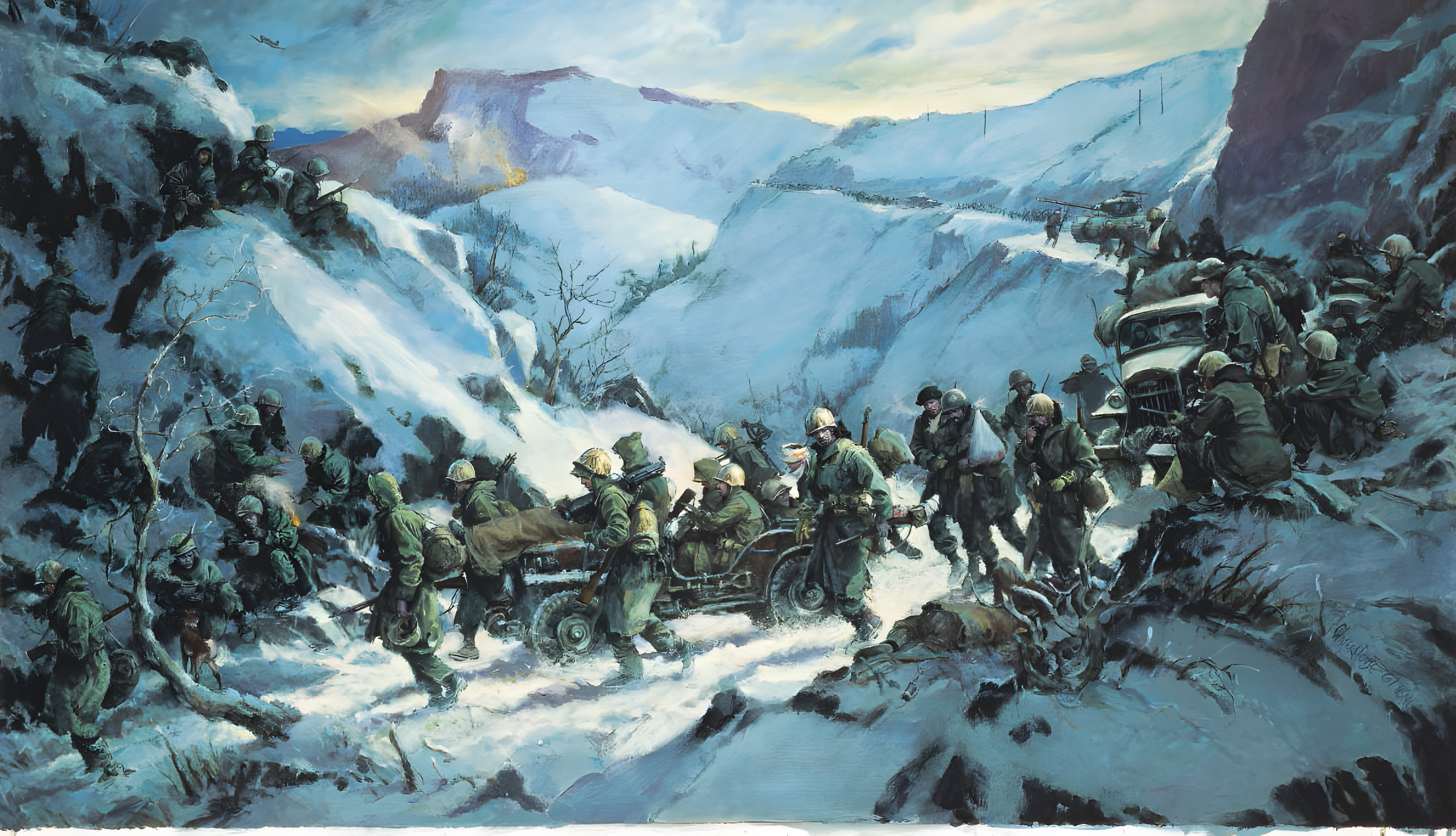



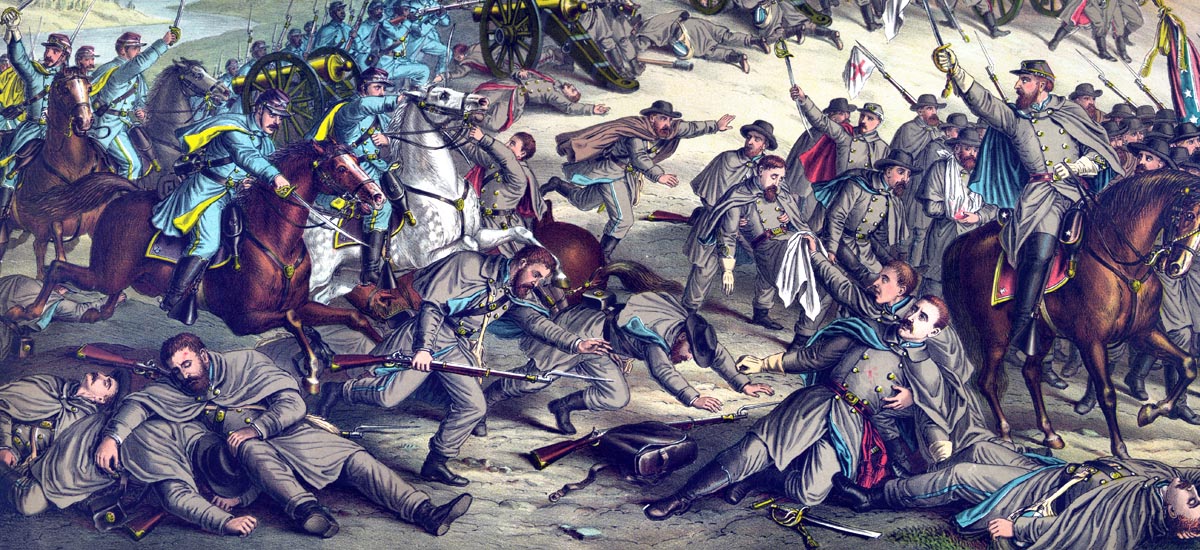
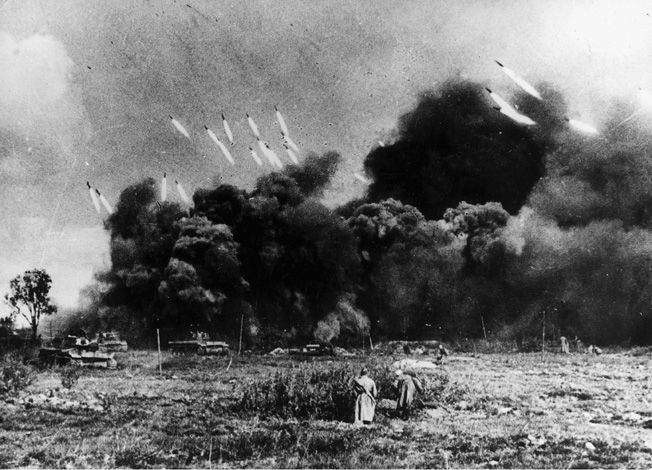
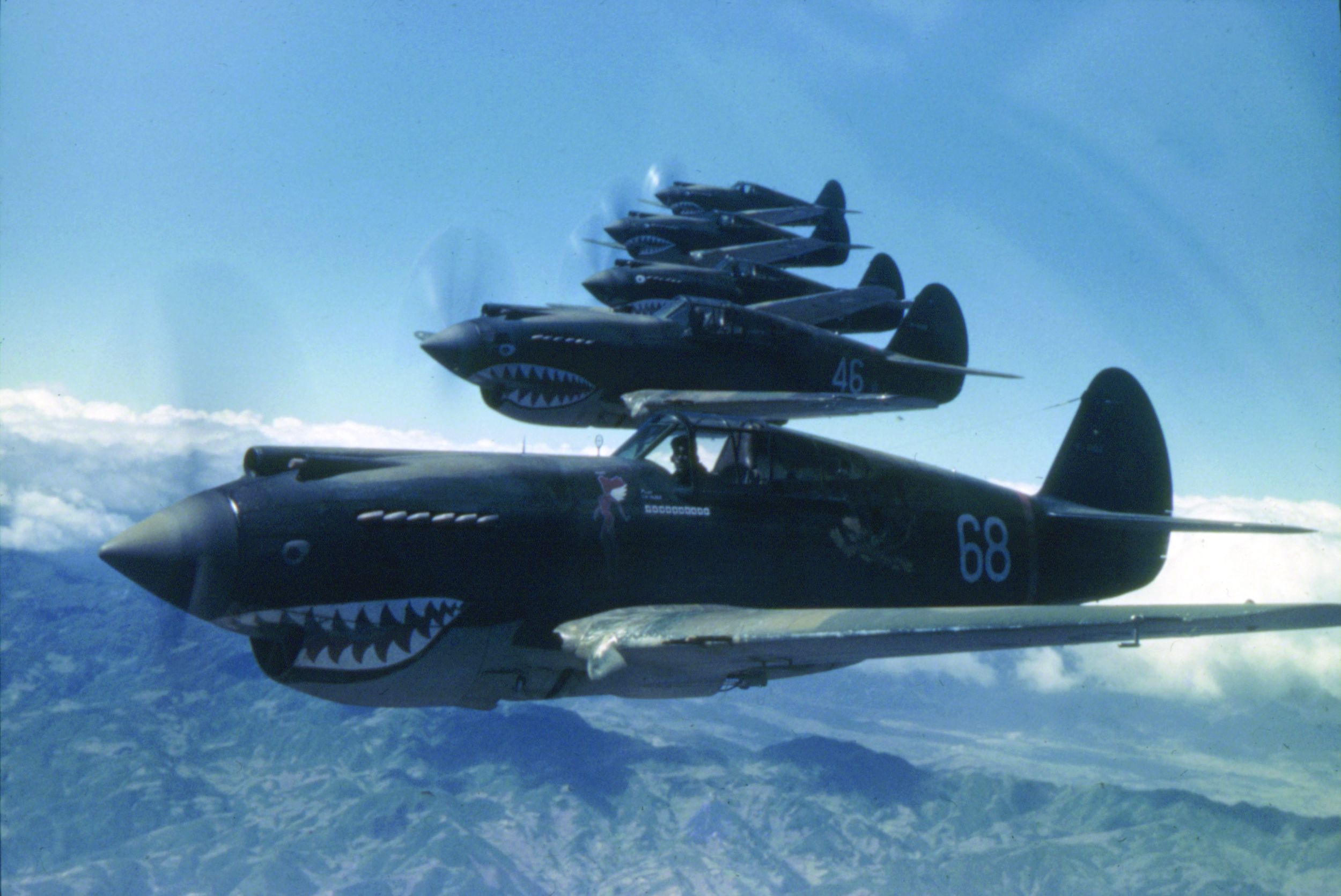
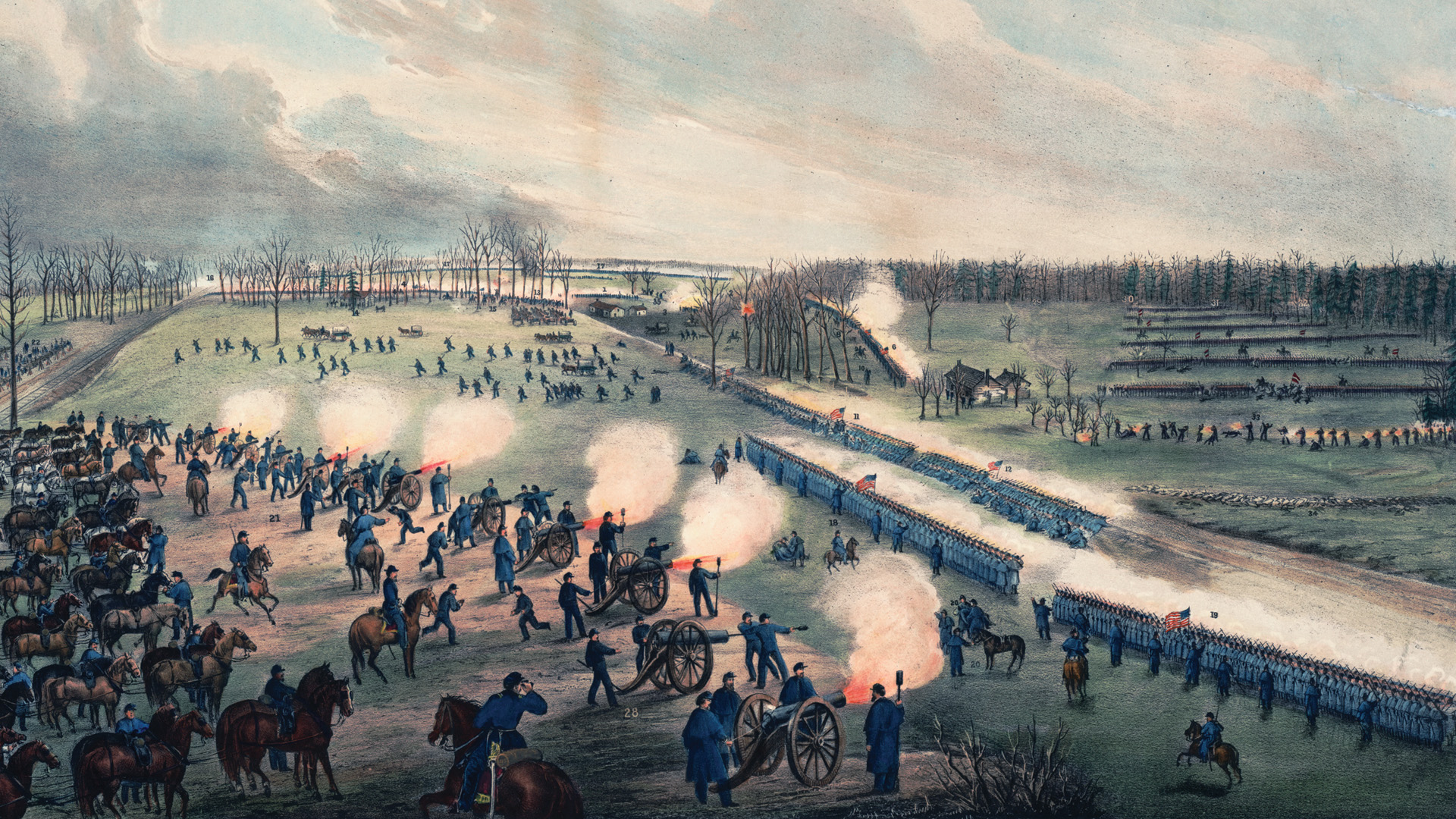
Join The Conversation
Comments
View All Comments